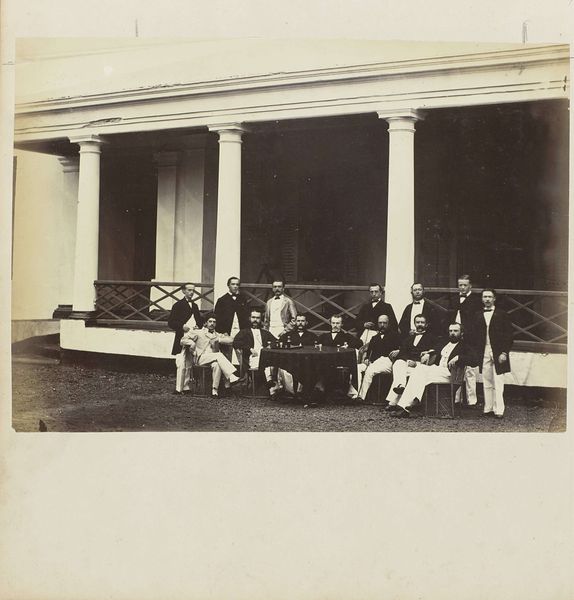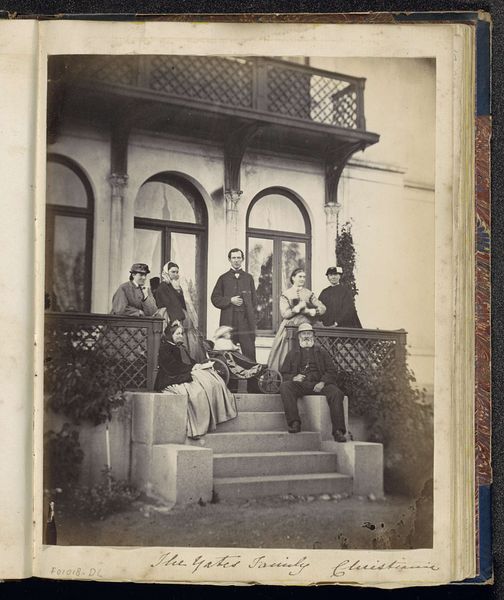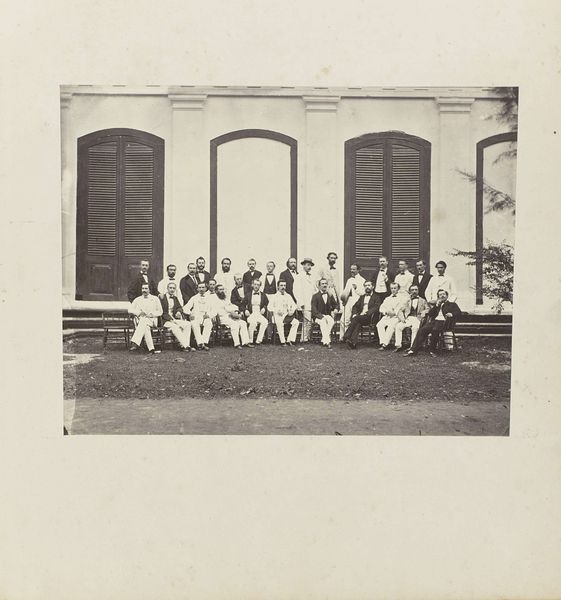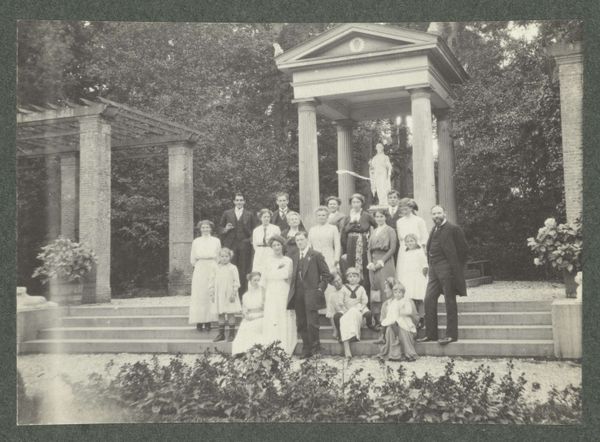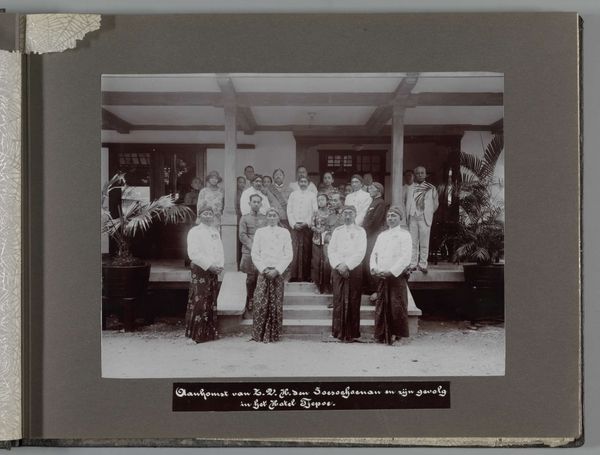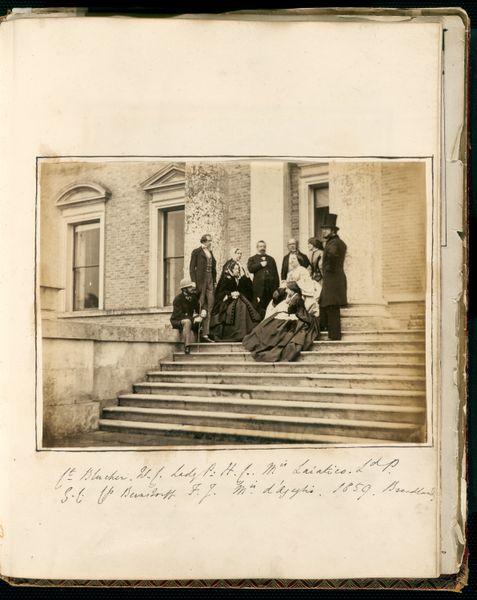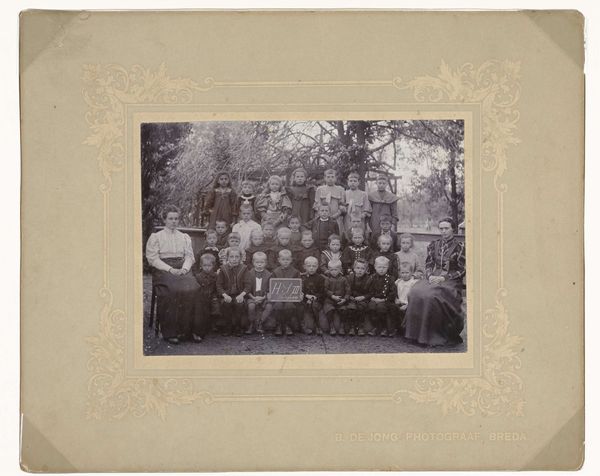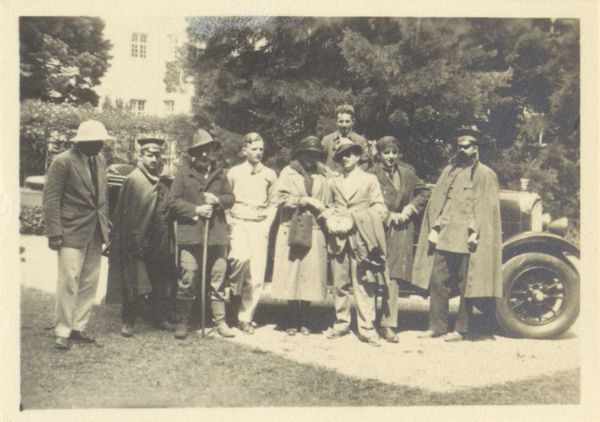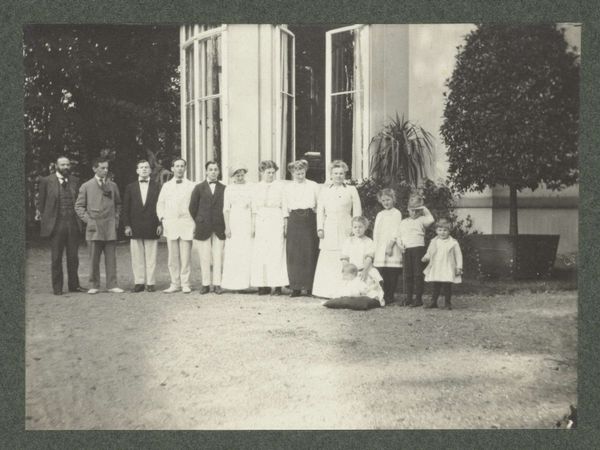
Familie Kessler op de trap van het buitenhuis in de tuin van landgoed Pauw 1913
0:00
0:00
geldolphadriaankessler
Rijksmuseum
Dimensions: height 73 mm, width 98 mm, height 198 mm, width 263 mm
Copyright: Rijks Museum: Open Domain
Editor: Here we have "Familie Kessler op de trap van het buitenhuis in de tuin van landgoed Pauw," a gelatin-silver print from 1913 by Geldolph Adriaan Kessler, housed in the Rijksmuseum. I'm immediately struck by the formal composition, almost like a classical frieze, yet there's something also very intimate about it. What catches your eye in this work? Curator: Note how the architecture behind the sitters—the columns, statues, and rigorous geometry—contrasts so markedly with the informality of the arrangement. Consider the photographer's positioning of the subjects. They are seated on steps. This is more than mere staging. It is a formal device for organizing the subjects within the pictorial field, layering them like horizontal elements of a grid. Do you perceive a hierarchy embedded within this arrangement? Editor: I hadn’t thought about it that way. I guess the adults are more centrally placed, which does create a sense of importance. What about the fact that it is a photograph rather than a painting? Does the medium change how we perceive the composition? Curator: Indeed. The inherent “indexicality” of photography, that is, its direct relationship to the real, lends a certain gravity to the arrangement. Every detail becomes a document. The photographer uses tonality, contrast between the bright structure and shadow details in clothes. Look carefully and decode it through elements, not associations. Editor: I see. Focusing on the purely visual elements, the photograph becomes almost an exercise in geometry and light. Curator: Precisely! Reducing art to its essential, visual language reveals a fascinating dialogue between form and content. Every angle, every line, becomes a potent carrier of meaning, abstracted from literal interpretation. Editor: I will try to use this perspective more. Thanks so much for shedding new light on this group portrait; I appreciate your formalist insight! Curator: My pleasure. There's always more to discover if you analyze the picture using its individual components.
Comments
No comments
Be the first to comment and join the conversation on the ultimate creative platform.
